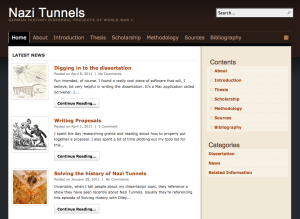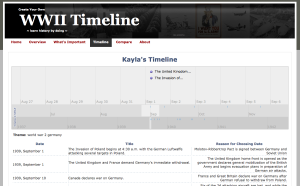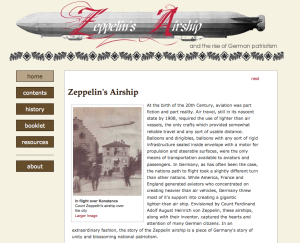 Nazi Tunnels (PhD Dissertation)
Nazi Tunnels (PhD Dissertation)
This is the companion site to my dissertation for the PhD in Modern European History at George Mason University. I’ll be posting information about the dissertation writing process, the research, and the analysis and results in the form of a blog. This is also a digital version of the prospectus presented to the History PhD Colloquium in December 2010.
Allied air raids were intended to destroy important German factories and demoralize German citizens through the destruction of populated cities. After the turn of the War in 1942, protection of key manufacturing facilities fell initially to Albert Speer, minister of the Reich Ministry for Armaments and War Production. Plans for protecting German factories in underground bunkers, caves, tunnels and mines began as early as 1943, but intensive efforts for subterranean dispersal only began in the summer of 1944. Plans for underground production facilities, which were enthusiastically encouraged by Hitler, were to be completed by 1946 with a completion ratio of six bunker systems every seven months, and a total combined floor plan of over 1,864 square miles, 4 larger than the State of Rhode Island. While there are many books and articles that discuss the German war economy and German businesses during the war, there are few that describe in detail the efforts of protecting German armaments factories. More rare are those that focus explicitly on the underground dispersal projects. This dissertation attempts to fill that gap.
 World War II Timeline
World War II Timeline
This web site is a project for Hist 689: Teaching and Learning History in the Digital Age. This is one of my last classes for the MA in History at George Mason University. The purpose of this site is to create a learning “module” that is accessible via the World Wide Web. This module is designed to be a “web-based learning experience from a set of primary source documents.” One way to deal with the immense amount of information that can be learned about WWII, is to plot the events on a timeline. But what events should be included? Which should be left out? Is that a matter for the historians, or can anybody participate in plotting the events of history? Remembering our past is the most important thing that a historian does. Completing the following steps will allow the user to get a feel of what it is like to be a historian, by deciding which events should be included on a timeline of WWII.
 Zeppelin’s Airships
Zeppelin’s Airships
Basically, this website is part of my training as a digital historian. For the Hist 697 class, I am required to create a digital history project. Presently this consists of creating a website with a scholarly and historical theme. I chose to research and present the pivotal event at Echterdingen in the history of the Zeppelin airship. I am interested in German history specifically and aviation in general. It’s always grand when two interests can be combined. The basis of this website rests on the research completed for a paper done for Hist 731, also taken this semester (Spring 2006). Unique to Count Zeppelin’s account is the massive amount of public attention and payed to him and his airships, and the pride and unity that were felt among the German people. The Zeppelin airships, after the crash of the fourth ship at Echterdingen and the subsequent spontaneous public fund raising, were seen as a symbol of the German population, and truly, without the financial and emotional support from the common people, the future of the Zeppelin airships would have died on the field of Echterdingen. The paper and the website were created in an effort to portray the phenomenon and euphoria surrounding the Zeppelin airships.